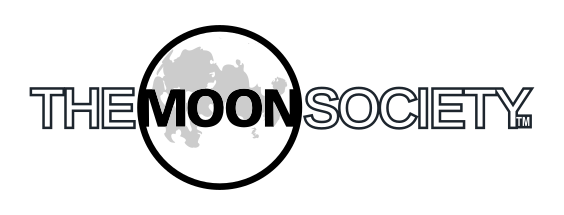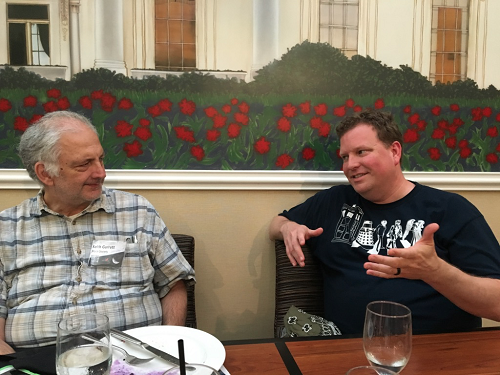Hi. I’m Ben Smith and this is a summary of my International Space Development Conference (ISDC) 2019 experience.
Friday, June 7
Morning Plenary – Keynote Speaker: Jim Bridenstine, NASA Administrator
- Talked about Artemis and its components.
- Explained that Artemis will be this generation’s Apollo.
- Explained that the first human mission (1 woman + 1 man) on the surface will only last a handful of hours. It will be 2 years before the next crew lands.
- My personal opinion is that Artemis has the potential to be sustainable. It also has a greater potential to be another “flags and footprints”. The proposed infrastructure is minimal (basically Gateway) and a lot can happen in the two years between missions.
Morning Track – Moon (Commercial Moon session). This session had some presenter changes and I didn’t do a great job taking notes.
- Commercial Lunar Exploration to Support NASA’s Science Goals (CLPS). Steven Clarke (NASA)
- No notes. Not sure if it was skipped.
- Evolutionary Lunar Base Strategy. Charles Miller (NextGen Space LLC)
- No notes. Pretty sure it was skipped.
- Lunar Development Lab Concept for Lunar Resource Mapping, Extraction and Utilization. Dr. Allison Zuniga (NASA Ames Research Center)
- LDL is a concept of the Frontier Development Lab.
- FDL is using “artificial intelligence research for space exploration and all humankind”.
- One of the proposed LDL projects is to use artificial intelligence to automatically identify Lunar craters.
- Mapping, prospecting, and traverse planning.
- Lunar Resource Mapping Challenge 2019
- Looking for M-Class impactors (Fe-Ni-Co).
- It is estimated that there are millions of tons on the Moon.
- Hard to identify.
- The idea is to blend multiple data sources to find correlations that indicate the presence of these impactors.
- Thermal anomalies (Chinese data)
- Magnetic
- The point is to reduce uncertainty and reduce risk
- Financial
- Political
- Technical
- The plan is for the LDL to run challenge problems every 3-6 months all year long.
- Challenge problem > Research acceleration environment >Disseminate solutions > New challenge problem.
- LDL is a concept of the Frontier Development Lab.
- Reusable Lunar Lander. Danielle Richey (Lockheed Martin)
- No notes. May have been skipped.
- MOBIUS: An Evolutionary Strategy for Lunar Tourism Future of ISS. Mehdi Lali (Boeing St. Louis)
- No notes. May have been skipped.
- Vision and Approach to Near-future Lunar Exploration. Shigeru Imai (Japan Manned Space Systems Corporation)
- This may have been skipped as well.
- I do have one note though. I’m not sure where it belongs but I’m putting it here.
- Supersynchronous Earth Orbit
- Just up to Lunar gravity but not into it.
- Transfer to a lander at apogee.
- Could use it for cyclers.
- Outside the Van Allen part of the time. Spacecraft needs increased radiation shielding.
- Lunar EVA Space Suits for NASA and Commercial Missions. Ted Southern (Final Frontier Design)
- IVA (inside the vehicle)(simple) vs EVA (outside the vehicle)(very complex)
- Microgravity vs planetary
- Lunar EVA suit challenges
- Dust/abrasion
- Temperature (including conduction through planetary surface)
- Moving
- 1/6 Earth gravity
- 8-hour mission with reserve
- Seated and standing positions
- Baseline suit is the Shuttle/ISS EMU
- $15 million each
- Only 11 in operation
- Frequently returned to Earth for expensive refurbishing
- Russian suits are designed for several uses and then disposed.
- Weighs 319 pound in 1 G.
- NASA’s next suit is the Z2.5
- Basically, an EMU with a different torso.
- No dust protection
- No thermal boots (to prevent thermal conduction)
- There are NO Lunar EVA suits in development at NASA.
- There are no plans for NASA to challenge commercial providers to create suits.
- Commercial space companies (SpaceX, Blue Origin, etc.) also do not have any planned Lunar EVA suits.
- The big question is how are we going to the Lunar surface without Lunar EVA suits?
- Less than 5 years to build working suits is not a lot of time.
- Lunar EVA suits need:
- Much less mass.
- Thermal boots.
- Regolith proof.
- Leg mobility.
- IVA/EVA capable.
- Final Frontier Lunar EVA suit design
- Rear entry
- Dust proof
- 5.5 psi (100% O2)
Morning tracks not attended – Bio-sustainability, Mars, NIAC.
Lunch – I think this was the day that Keith, Dana, and I tried a diner down the street. I had meatloaf (it was good) and we talked about the conference, space, and the Moon Society.
Afternoon Track – Moon (Architectures and Technologies session)
- My notes for this session are a mess. So many speakers either didn’t show or were placed into different time slots. I didn’t take a lot of notes but I did scribble a lot of ideas for Lunar Homestead. My apologies if I place a note under the wrong speaker.
- Space Launch Systems for Lunar Missions. Benjamin Donahue (Boeing)
- Sales pitch for the SLS. I still think we should scrap it.
- NextSTEP Habitats. (tbd) (NASA Marshall Space Flight Center)
- I think they skipped this one.
- NASA Centennial Challenges OverView / 3D Printed Habitat Monsi Roman (NASA Marshall Space Flight Center)
- Cube sats
- Cornell – Cis-Lunar Explorers – electrolysis propulsion experiment
- Space robotics
- CO2 > glucose > bio-reactor > farms
- Health
- Mars habitats (3D printing)
- F-Prime is the open source software that JPL uses.
- Cube sats
- NASA 3D Printed Habitat Centennial Challenge. Tracie Prater
- I’m pretty sure I saw her speak but I don’t have any notes.
- NSS Student Space Settlement Contest Presentation
- Another good student presentation. No notes though.
- A Holistic View on Lunar Habitats. Dr. Haym Benaroya (Rutgers University)
- No notes. Might have been skipped.
- CisLunar Explorer Project. Dr. Dean Larson (National Space Society) and Aaron Zucherman (Cornell University)
- No notes. Might have been skipped.
- LROC Update. Dr. Brett Denevi (Johns Hopkins University Applied Physics Laboratory)
- Three cameras mounted on the Lunar Reconnaissance Orbiter (LRO)
- 2 narrow angle
- 1 wide angle
- Largest dataset of any planetary mission
- 50 cm / pixel
- Looking for:
- Ongoing tectonics
- Recent volcanism
- Crater topography
- Permanent shadows
- Lunar pits/skylights
- Might show basaltic layers
- Might show the mega-regolith
- Illumination maps
- Three cameras mounted on the Lunar Reconnaissance Orbiter (LRO)
- Master Planning and Architecture for a Moon Village. Daniel Inocente (Skidmore Owings Merrill) and Laura Gonzales (Skidmore Owings Merrill)
- No notes. Not much substance. Seemed like marketing for their architecture firm.
- 1-G Lunar Habitat. Dr. Thomas Matula (Sul Ross State University)
- HALE (Habitat Autonomous Locomotive Expandable)
- Orbital ring space settlement
- Only habitat sections rotate
- No NASA or public support needed
- Built out of Lunar material
- Surface Artificial Gravity Autonomous Settlements
- I didn’t note the actual design. I think it involved a very large circular track that spherical habitats race around to generate artificial gravity on the Lunar surface. My actual notes are:
- High tech
- Expandable
- Impractical
- I didn’t note the actual design. I think it involved a very large circular track that spherical habitats race around to generate artificial gravity on the Lunar surface. My actual notes are:
- HALE (Habitat Autonomous Locomotive Expandable)
- The Subterranean Option; Lunar-Mars Lava Cave Habitat Development Efforts Update. Michael Dunn (4th Planet Logistics Inc.)
- Build settlements into lava tubes.
- Need realistic analogs in Earth lava tubes.
- Test robotics and inflatables
- Flexible compressing airlocks
- From Cave Man to Cave Martian book
- Innovation in Lunar Robotic Construction Methods. Dr. Behrokh Khoshnevis (University of Southern California)
- Site Selection Strategy for a Permanent Lunar Settlement. Dr. David Schrunk (Science of Laws Institute) and Madhu Thangavelu (University of Southern California)
- Landing pads
- Monolithic slabs will break under the exhaust plume.
- Use flexible interlocking tiles.
- Possibly use cast basalt’
- Landing pads
- The Pylon: Near-Term Commercial LEU Fission Reactor For Lunar & Martian Heat & Electricity. Dr. Christopher Morrison (UltraSafe Nuclear Corporation)
- Reactor only
- 1 MW
- 1.5 metric tons
- Generates both electricity and usable heat
- Can’t be built with local material. Must import from Earth.
- Reactor only
- Making the Moon Accessible to the World. Dan Hendrickson (Astrobotic Technology Inc.)
- No notes. May have been skipped.
Afternoon tracks not attended – Bio-sustainability, Mars, NIAC.
Evening – I passed on the silent auction and the movie “Apollo: Missions to the Moon”. I think I had dinner at the restaurant and watched a movie in my room. I don’t really remember.
Another good day. I learned a lot.

